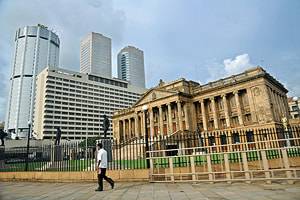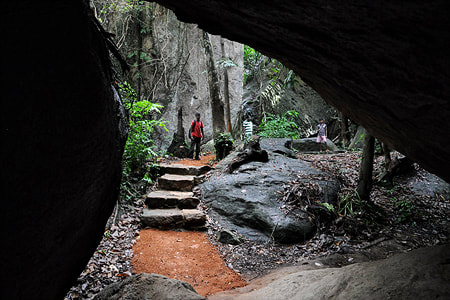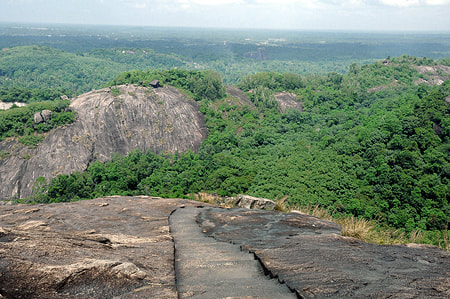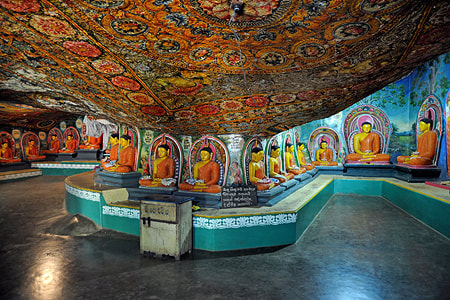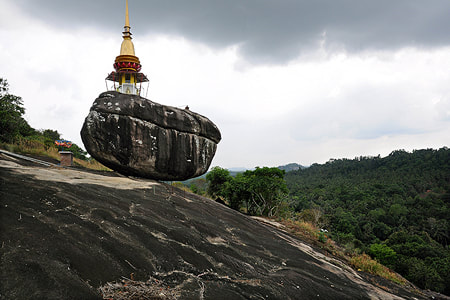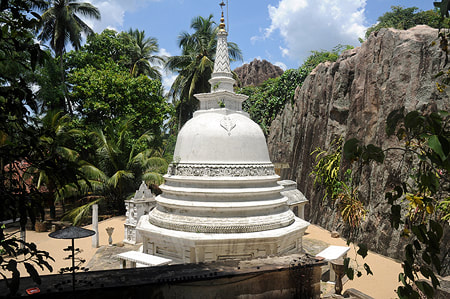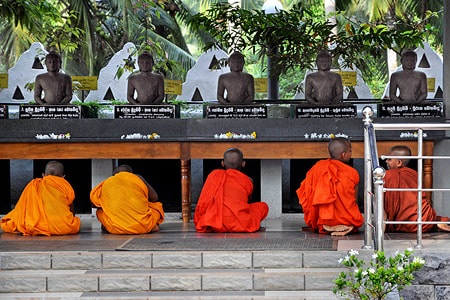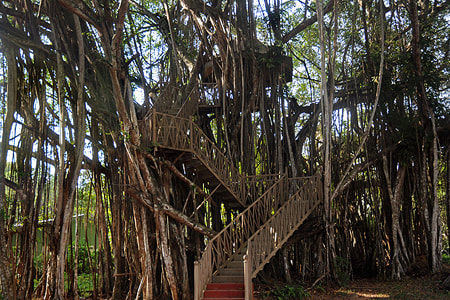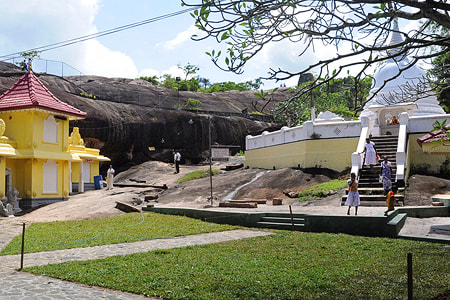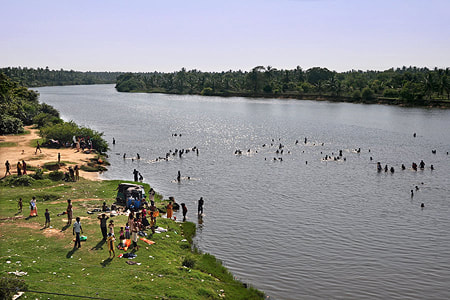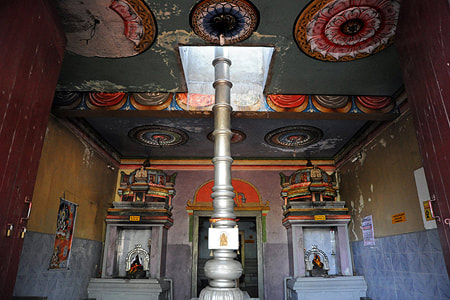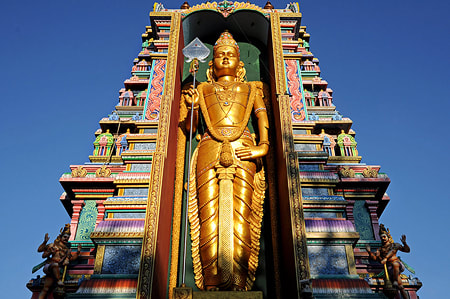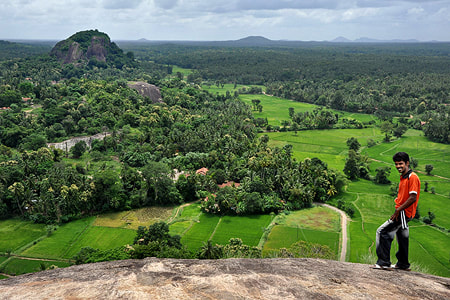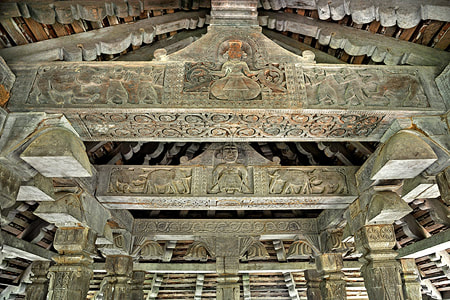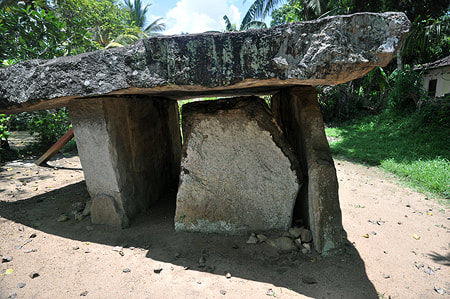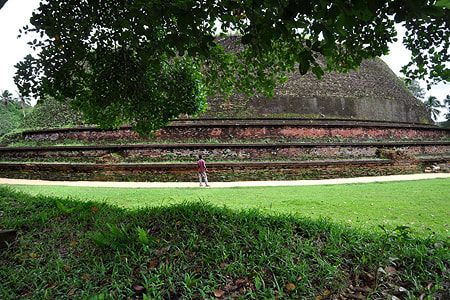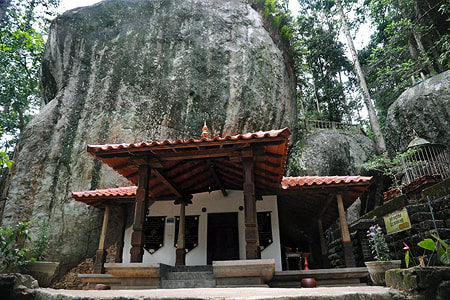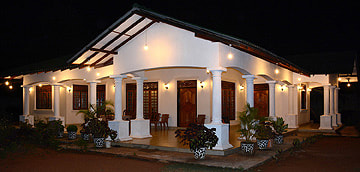Off the beaten path around Colombo & NegomboThis page is about less-frequented places of interest in the
west of Sri Lanka. Find a list of links to dozens of off-the-beaten-path destinations all over Sri Lanka here... |
Popular tourist attractions in the west of Sri Lanka
Colombo is the capital and by far the largest town of Sri Lanka. The beach resort closest to the city centre is the southern suburb of Mount Lavinia. The coastal town of Negombo, with a major fishing port and a long but unprotected and not very clean beach, is closest to Colombo International Airport. A popular tourist attraction at the coastline in between Colombo and Negombo is a boat safari in the Muthurajawela Wetlands. The most famous temple near Colombo is in the suburb of Kelaniya. The most beloved destination in the hinterland is Pinnawela Elephant Orphanage.
Lonesome places around Colombo and Negombo
|
3***stars & almost secret
Asked for a highly recommendable insider tip concerning off-the-beaten-path destinations in the surroundings of Colombo, the answer is: the forest and cave moanstery of Pilikuttuwa. The rare visitors are fascinated by the idyllic setting and the austere lifestyle of the monks and enjoy the natural beauty and tranquility of this place. Exploring the area requires two shorter hikes going a little bit uphill and downhill.
|
|
2**stars & almost secret
The nearby Maligatenna is also a forest monatery with some monk cells in caves and a painted cave temple. However, walking to the stupa on the very the top reqires some more strains, as this is actually the highest elevation in the Gampaha District. But the scenic beauty of the path through the rock formations and the vistas from the very top are unforgettable.
|
|
2**stars & almost secret
Another meditation monastery in the same area is Varana (Warana). Distances are shorter here, but there are more painted caves open to visitors, if a monk or helper provides the keys. Actually, the Meda Maluwa („middle terrace“) of Varana has the largest cave temple of the Western Province, but the sculptures and paintings are not comparable in quality to those of Dambulla or Ridigama or Degaldoruwa in the centre of the island.
|
|
2**stars & almost secret
A very hidden though not entirely tranquil place in the same area is the sacred logan of Pettagangala. It’s a quite spectacular scene and almost never visited by foreigners, but often there is some noise from the nearby quarry and the immediate surroundings are not as lonesome as those of the three moansteries mentioned above.
|
|
1*star & almost secret
This entire area is known as Siyane Korale. Another temple, very close to Pilikuttuwa, is Koskandawala. In itself, It’s not worth a detour from Colombo, but someone nterested in seeing as many stupas as possible might consider a break here on the way to one or several of the four other sacred sites mentioned above. Not at the same road, but easily reachable on a short detour is a typical Ambalama, a wooden hut used collectively as resting place by local paddy farmers and pilgrims.
|
|
1*star & almost secret
A very sacred place of some overregional reputation is even further inland, behind the said temples of Siyane Korala. Though it has a rare example of a modern Vatadage, Atthanagala is worth a visit only by those who are eager to see as many sacred Buddhist sites as possible. Most of the buildings are modern and the sculptures are garish. But this place commemorates the self-sacrifice of Sri Lanka’s most popular king, Sirisanghabo, who is almost venerated like a saint.
|
|
1*star & almost secret
In between the Siyana Korale area and Negombo is the district capital Gampaha. Situated in the suburb of Henerathgoda at the road to Negombo, there is one of Sri Lanka’s Botanical Gardens. It’s not popular with foreigners, but the greens and greenhouses attract schoolclasses and weekend picknickers and sports activists and other Sinhalese and Tamil visitors from the Western Province. Dadagamuwa in the surroundings of Gampaha is not special, just a typical Buddhist temple in the Kandyan and modern style.
|
|
1*star & almost secret
Typical temples in the immediate hinterland of Negombo are the cave temple of Aluthepola and the rock temple of Maboda. The latter has the only large historical rock-cut Buddha statue in the western plains of Sri Lanka. This might sound alluring, but to be honest, it‘s not very attractive any more, as the old statue is completely covered with painted new stucco and protected behind glass.
|
|
1*star & rarely visited by tourists
The next major fishing port further north of Colombo is Chilaw. It’s worth considering a detour or a break on the way to Kalpitiya or Wilpattu, if you are interested in seeing a hotspot of the Hindu Culture within a Buddhist majority area. Three temples are noteworthy in the immediate surroundings of Chilaw. Munneshvaram to the east of Chilaw is one of the four most sacred Shiva temples on the island.
|
|
1*star & almost secret
Manavari to the north of the city is believed to be the first place where Lord Rama installed a Lingam in veneration of Lord Shiva. This attracts Hindu Pilgrims from India, as the only other place in the world, where such a Ramalinga can be worshipped is Rameshvaram, the most important pilgrimage site in South India. Compared with Rameshvaram, however, Manavari might be disappointing, as it it small in size and the new architecture does not differ much from most other Hindu temples on the island.
|
|
1*star & almost secret
The Replica of Kataragama temple in Madampe to the south of Chilaw is worth a photo stop. It’s a very new temple, privately sponsored. Apart from Nagapooshani Amman temple on Nainativu Island in the very north of Sri Lanka, this temple in Madampe is definitely the most colourful one you will find anywhere in Sri Lanka. Regrettably, you are not allowed to take photos within the temple precincts. The temple is dedicated to Shiva’s son Subrahmaniya alias Kartikkeya, who under the name of Murugan is one of the most revered deities among Tamils and also venerated as Kataragama by Buddhist Sinhalese.
|
|
2**stars & almost secret
In almost the same distance as Chilaw, but much further inland, is Dambadeniya, not far away from the Provincial capital Kurunegala. Travelling from Colombo or Negombo to Anuradhapura, you can take either the coastal road via Chilaw or the inland road crossing Kurunegala. Taking the latter route, Dambadeniya might be worth a stop of one or two hours. The unpretentious village was Sri Lanka's capital in the mid and late 13th century. It’s worth climbing the once fortified rock, the vistas to the coconut and paddy cultivation area are magnificent. The nearby wooden temple, at the place of a former tooth temple, is from the Kandyan period, it contains some of the best Kandyan paintings you can find in the western plains.
|
|
1*star & almost secret
In 7 km distance from Dambadeniya is the best-preserved historical Ambalama of Sri Lanka. It’s just a small wooden hall, open to all sides. It's nonetheless noteworthy. Amabalamas serving as both local assembly halls and transregional pilgrims rests, are a typical feature of Sri Lanka’s culture. The small Ambalama of Panavitiya furthermore has one very remarkable feature: It’s the place where you can see best traditional woodcarvings still in situ, only second in quality to the famous Embekke temple near Kandy. Another very old and classical Ambalama several kilometres firther north is in Karagahagedara, but this one undecorated.
|
|
1*star & almost secret
As many tourists staying in Negombo or Colombo – and also in Kandy - travel to Pinnawela for seeing the famous elephant bath, they could consider to see some more places of interest in this region. To the north of Pinnawela, Padavigampola is by far the most noteworthy place for those interested in megalithic culture, as this is the largest dolmen on the island. Beligala is worth a detour only for stone carving enthusiasts, as there is a quite unique moonstone left from an ancient tooth temple.
|
|
2**stars & almost secret
To the south of Pinnawela, there is the giant stupa of Dedigama, marking the borthplace of one of Sri Lanka’s most famous kings, Parakramabahu the Great. It’s actually the largest stupa in the western part of the island. Even more interestingly, it’s one of the few stupas that were permitted to be opened by archaeologists. Some of the findings are on exhibition in the attached museum, which is small but one of the most interesting collections of archaeological findings on the island.
|
|
2**stars & almost secret
Further south and not far from the Kelani river valley and its tourist hotspot Kitulgala is the ancient forest monastery of Salgala. Though mentioned in some pocket guides, it's still almost untouched. Salgala can only be visited during morning hours, as it is a place of meditation for the monks living here permanantly or coming for a visit for classes. Salgala is one of the best places to study the live of hermits, forming a central part of the Sinhalese Buddhist culture.
|
